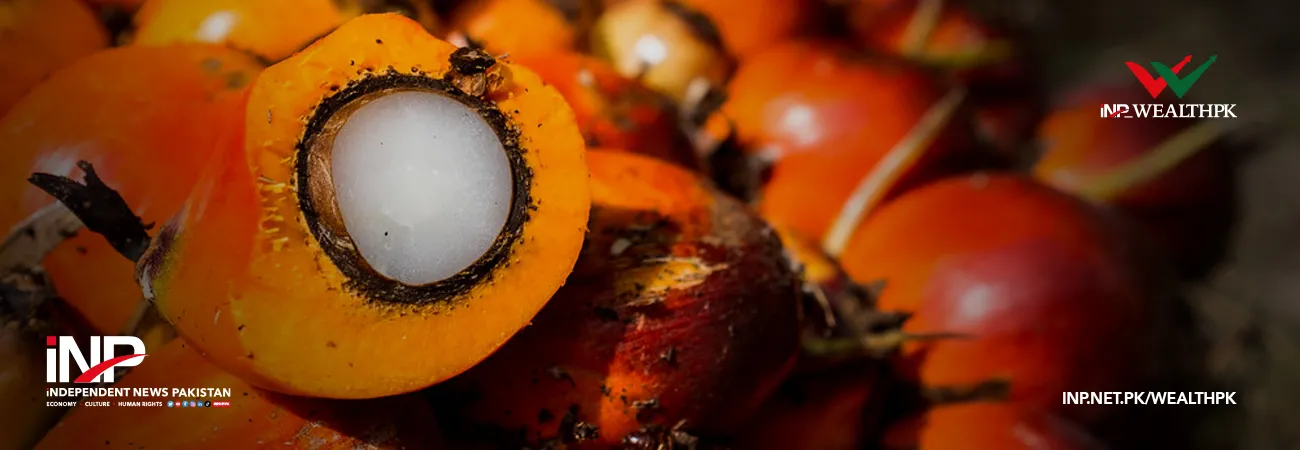By Karim Madad
ISLAMABAD, April 11 (INP-WealthPK): Pakistan plans to reduce up to 20 percent of its projected greenhouse gas (GHG) emissions by the year 2030 subject to availability of international grants to cover the total abatement cost, according to a report of the Asian Development Bank (ADB) released on Wednesday.
The report, a copy of which was available with WealthPK, said that Pakistan ratified the United Nations Framework Convention on Climate Change (UNFCCC) in June 1994 and has since submitted two national communications on climate change. Each of these contained an updated inventory of the country’s GHG emissions and information about mitigation and adaption measures, planned or being implemented; steps that the government has taken to integrate climate change considerations into relevant social, economic, and environmental policies; and the related financial, technical, or capacity-building needs.
The report said Pakistan is now preparing its third national communication. Under the Paris Agreement, each country is expected to outline and communicate its post-2020 climate actions in the form of a Nationally Determined Contribution (NDC).
Pakistan, the ADB report said, submitted its Intended NDC to the UNFCCC in 2015.
The ADB report further stated that the estimates of GHG emissions from the waste sector in Pakistan are found in the country’s national communications and NDC. For the waste sector and others, the country used the Tier-1 (gain–loss) methodology and Intergovernmental Panel on Climate Change (IPCC) default emission factors in arriving at the estimates.
The report further stated that a review of Pakistan’s second national communication (2NC), however, seems to cast doubt on the reliability of the historical emission estimates for the waste sector, for the following reasons:
- The 2NC cites 15.65 million metric tons of carbon dioxide equivalent contributed by GHG emissions from the waste sector in 2014-15, versus the 12.29 million metric tons of carbon dioxide equivalent reported in the NDC for the same period. The contribution of waste to Pakistan’s total GHG emissions is also rendered uncertain by different figures.
- According to the 2NC, urban waste is disposed of in landfills and through open dumping and burning. The report added that the emission estimates are uncertain because of a lack of data on the amount of municipal solid waste (MSW) generated each year. The MSW emission estimates assume that only 60% of municipal waste is collected and dumped at disposal sites, and the 2NC estimates are confined to methane (CH4) emissions, suggesting that only landfilled waste is taken into account. Because of the lack of reliable data on the fraction of waste that is disposed of through open burning, the resulting carbon dioxide (CO2), nitrous oxide (N2O), and CH4 emissions are not considered, the report claimed.
The ADB report further said that the 2018 GHG Inventory (under preparation) for Pakistan’s First Biennial Update Report (BUR1), however, includes emissions from waste burning as well.
The report stated that no estimates for rural waste emissions have been prepared because there is no collection and disposal system on which those estimates can be based. It added that the emission estimates are based on the Revised 1996 IPCC Guidelines (IPCC 1996), which have since been superseded by the 2006 Guidelines (IPCC 2006) and the 2019 Refinement to the 2006 Guidelines (IPCC 2019).
The ADB report further said that IPCC inventory software used to generate the emission estimates (IPCC 1996) had not yet been updated to incorporate the 2006 Guidelines.
The latest version of the software (released in October 2019), however, takes those guidelines into account. The GHG emissions from the waste sector are expected to increase substantially in the coming years, with rapid population growth and urbanization. But no mitigation actions are suggested for the waste sector in the country’s NDC, the report observed.
The ADB’s latest report added that more accurate emission estimates are urgently needed and mitigation actions must be promptly put in place to reduce emissions from the waste sector.
Regarding waste management in Pakistan, the ADB report stressed that the Ministry of Climate Change (MOCC) is responsible for solid waste management in urban areas. At the provincial level, waste management is handled by local government departments. This responsibility in large cities has been delegated to public sector waste management companies, following some institutional reforms over the last decade.
In Punjab province, for example, the solid waste management function has been allocated to eight waste management companies, and in Khyber Pakhtunkhwa province, seven water and sanitation services companies manage waste on behalf of the local governments. Similarly, in Sindh province, the Sindh Solid Waste Management Board has been created in a bid to increase technical and professional capacity.
These companies and boards have relatively reliable databases and waste measurement equipment, including weigh bridges at the landfill sites. The companies can provide real-time data on waste collection and disposal, once a framework for data management is established. Data collection through this route is recommended, to improve the accuracy of emission estimates.
Regarding Waste disposal routes, the report observed that the country has hardly any managed landfill sites.
“Most of its urban waste is dumped on open ground or left uncollected -- a state of affairs that calls to mind the unmanaged shallow (5 meters deep) landfill site category in the IPCC guidelines. In the rural areas, the report added that municipal waste disposal follows a similar pattern, although the dumping sites are more dispersed across open areas.
“No estimates are available for waste burned illegally by the municipalities. Waste burning as a method of disposal is not commonly practiced in any of the cities,” the report said. In the rural areas, it added that the waste is mostly organic and is mostly dumped locally on open ground and not collected or disposed of at dumping sites.
In some cases, agricultural waste is burned in the fields to clear the ground for the next growing season, according to the report.













